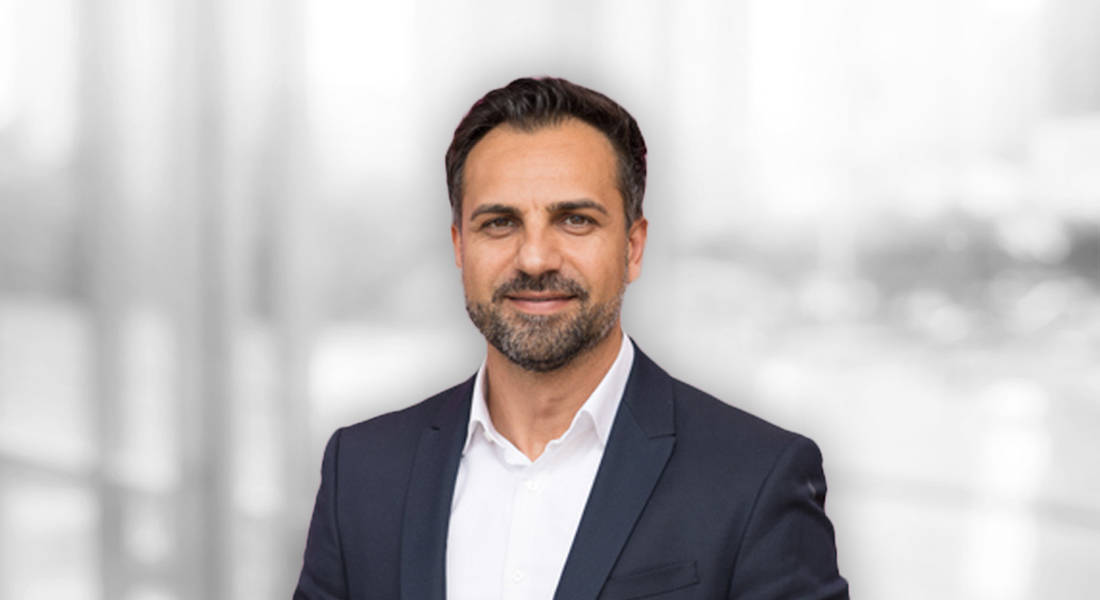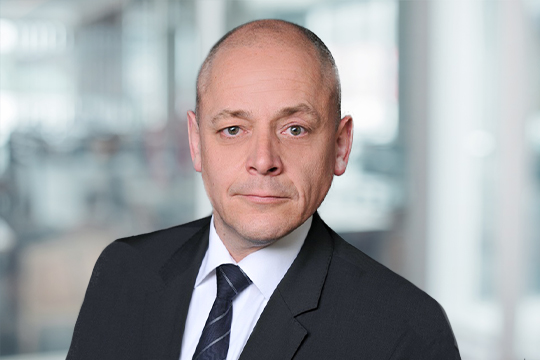An Interview with Babak Ghasemi, Telekom Deutschland GmbH
Babak Ghasemi is Chief Financial Officer in the consumer segment of Telekom Deutschland GmbH and works with his team on the introduction of new digital technologies in order to realize efficiency improvements in the financial processes of Telekom Deutschland. He reports on his experiences with the digital transformation of purchasing and accounting processes and will show which technologies he has introduced for process optimization. In an interview with Detecon consultant Emil Matevski, he explains why people should not be afraid of change and increasing automation. He also shows how his clients also benefit from digital efficiency.
How important for you is an increase in efficiency in the context of digitalization?
Babak Ghasemi: The question of efficiency has always been an important issue for companies – not only in the age of digitalization. The development processes in the past of the Industrial Revolution also had the goal of securing efficient and fast production. Today, however, the global scale of our supply and logistics chains means that increasing efficiency has become even more crucial. Lean and efficient business processes are not limited to improving the profitability of a company; they lead to a better customer experience as well. The use of the right digital technologies enables companies to realize efficiency measures more easily than ever before.
Nevertheless, many companies find it difficult to exploit efficiency potential on the basis of digital technologies. Why is that?
Being efficient means above all to have the courage of breaking old habits and allow changes. And many people still find it difficult to follow through on this point. Digitalization is even seen by some as a threat to job security. But this is not necessarily the result of digitalization processes. In addition, many companies lack the right digitalization strategy and the know-how to work efficiently on the basis of digital technologies. When we decided in 2016 to transfer the group’s purchasing and accounting activities to our shared service center within Deutsche Telekom Europe Services Europe (DTSE), we set ourselves the goal of increasing our efficiency by optimizing our processes. For more than three years, my team and I were in charge of a transformation process that would increase our automation rate and make us more digital for our customers. Today, we proudly look back at the result and can say that our efficiency program for the revamping of our service portfolio was a complete success. A higher degree of automation, which is indispensable for increasing efficiency, does not necessarily lead to less work overall, but in the best case, it frees up time that can be used for activities creating greater value. Our employees are the most important component of our company. Especially in times of digitalization.
What new technologies do you use to increase efficiency, and what influence do they have on your immediate working environment?
The new technologies help us to become faster, simpler, and more transparent. Before we could begin to optimize the procure-to-pay (PTP) added-value process from purchasing to payment in 2016, we needed a very clear picture, available in real time wherever possible, of the process landscape and its weaknesses. The core element of our strategy was the introduction of process mining technology using a software program from Celonis. Process mining involves the collection of log files by our IT systems; they are subsequently converted into a comprehensive real-time picture showing how our processes actually work. This allowed us to gain an objective overview of our business and analyze our processes in real time, paving the road to improved collaboration on process optimization and transformation. Once the necessary transparency had been created, the next step was to exploit the actual efficiency potential. We were aided in this by technological software solutions from Salesforce or the use of robotics process automation to optimize existing processes.
Can you also document your success with figures?
Of course. For example, we worked with Hackett, an established company in the financial sector, to compare our KPIs to an external benchmark, which measured efficiency in the PTP sector. Since Hackett always distinguished between world class and peer level benchmarks, we were able to pinpoint our success even more precisely. Expressed in concrete figures: in 2018, our shopping carts (EK) had a throughput time of 0.52 days (Hackett benchmark: 0.66 days); the EK no-touch rate, which indicates the automated throughput of orders, was 94.8 percent (Hackett benchmark: 66 percent); and our purchasing automation rate was 66 percent (no benchmark data is available for this). In accounts payable, we had a run time of three days for invoice processing (Hackett benchmark: three days); the no-touch rate was 80.3 percent (Hackett benchmark: 79 percent); and finally, we were hugely successful in avoiding cash discount losses and posted 94 percent in the avoidance of cash discount losses (Hackett benchmark: 84 percent). These figures speak for themselves!
What about the use of robotics process automation (RPA)?
We introduced RPA solutions for the automation of manual, simple, rule-based, and repetitive activities. The software solutions, so-called front-end wizards, use the same systems (front ends/user interfaces) as an employee today so no adaptations to the current IT systems are necessary. This technology alone enabled us to realize significant efficiencies in our purchasing and accounting processes. Of course, a sustainable operating and maintenance concept must also be set up here as the bots must be integrated into the operational processes. We were able to acquire extensive experience in the change and transformation process for PTP. This experience is invaluable for the introduction of more RPA solutions, which we now want to introduce in the finance division of Telekom Germany. We would like to relieve our employees of manual tasks in the area of reporting, month-end closing, or test automation. The time gained by streamlining these processes can be used for higher-value activities such as content analysis, digitalization topics, or project work.
And how important are chatbots to you?
Our chatbots are a profit-enhancing factor operationally. Our chatbot “Einstein” for PTP answers questions and points to knowledge articles as well as external portals, collects feedback for us, and supports us in ticket creation and processing. It also forwards live chats to our first-level agents during our business hours and can be used to inquire about the status of documents. It has its own personality and tells us interesting facts about Telekom. Einstein can even make small talk with its conversation partner. And it does all this 24/7. This continuous operation, which is a prerequisite for realizing efficiency effects in short order, cannot be achieved by human personnel at all.
Do you also use cloud solutions?
Of course, cloud solutions play a key role when it comes to increasing efficiency. In cooperation with Salesforce, we have integrated a service cloud for the introduction of a new support architecture within the added-value chain of PTP activities. The primary components of the architecture are a ticket tool, telephony management, knowledge database, and self-services. The aim is to optimize the processes running in the support sector and to increase customer satisfaction. We are currently working on the digitalization of our reporting in the Telekom Germany finance department and are using an analytics cloud solution from SAP. This is a self-service analytics tool. It functions as a front-end tool for the visualization of digital reporting and enables real-time analysis as well as provides planning, simulation, and forecasting options.
What technologies do you believe will ultimately serve as the long-term basis for efficiency improvements in finance departments?
The topic of artificial intelligence (AI) is becoming increasingly important for the finance division. Deutsche Telekom began investing in AI and acquiring internal resources and expertise years ago. Mature solutions have been implemented or are being extensively tested in almost all the fields of application typical for AI systems. They include chat services for interaction with customers, credit scoring for customer evaluations, text mining in customer emails, predictive models for maintenance of end-customer devices, fraud detection, and advanced analytics models (for example, concerning grid expansion). Still, AI is not a topic that will have a major impact in the short term. Meaningful use cases for AI systems require large amounts of data of excellent quality and a lot of time, sometimes several months or even years. The expertise of data scientists or business experts with an understanding of the data available in their own companies is absolutely essential for the realization of AI projects. The issue is one requiring a long-term vision.
And what do you recommend to achieve success in the short term?
The topic of advanced analytics provides a little more maneuvering room that will lead to increases in efficiency in the short term. Analytics also continues to be one of the tools critical to success on the path to the digitalization of the finance division. For example, we are currently working on a forecasting model that uses simple extrapolation/regression models to generate a partially automated forecast for relevant KPIs based on internal financial data that can generate forecasts for this year and the next. The modeling currently focuses on 16 of 28 items in the profit and loss account that we have included in the project. This is a major task for a corporate group of our size as reliable planning is a point of reference tracking the direction of movement in results for our stakeholders. We are also taking an analytical approach for a reduction in the volume of invoices and payments, and we have already – even in this year – been able to reduce significantly the number of service contacts. Our project aimed at forecasting cash capex liabilities at Telekom Germany was also a complete success. Using the solution we developed, we support capex management in cash capex forecasting and illuminate transparently the capex invoices that are currently due and the ones we can still expect. This project is an excellent example of digital efficiency in the finance division.
How do your customers benefit from the technologies you have introduced?
Our customers gain time from shorter process runtimes, save money because of reduced inefficiencies in the process landscape, are more satisfied because the customer experience improves, and free up capacity to take on more demanding and analytical tasks that are becoming more important in any case.
To what extent can digital technologies help you to secure for the company a better position in competition?
If you know which decisions your customers will make tomorrow and which trends will influence them, you can target your sales activities more precisely. Moreover, the new technologies in the finance division help us to manage more effectively our performance indicators and in turn to deliver more accurately on our promise to the capital market. The more manageable and transparent the activities of their business are for them, the more efficiently they can manage their business and the more precisely they can position themselves in competition. However, I would advise against believing that every new technology always fulfills its purpose in a general way. You must think very carefully about what technology can create added value for what problem. The required investments are usually high and only pay off in the medium to long term. We are generating more use cases to make processes and business procedures even more transparent and efficient. In the course of this work, we will move even closer to our business departments with the aim of realizing tangible efficiency improvements that impact the end customer.







